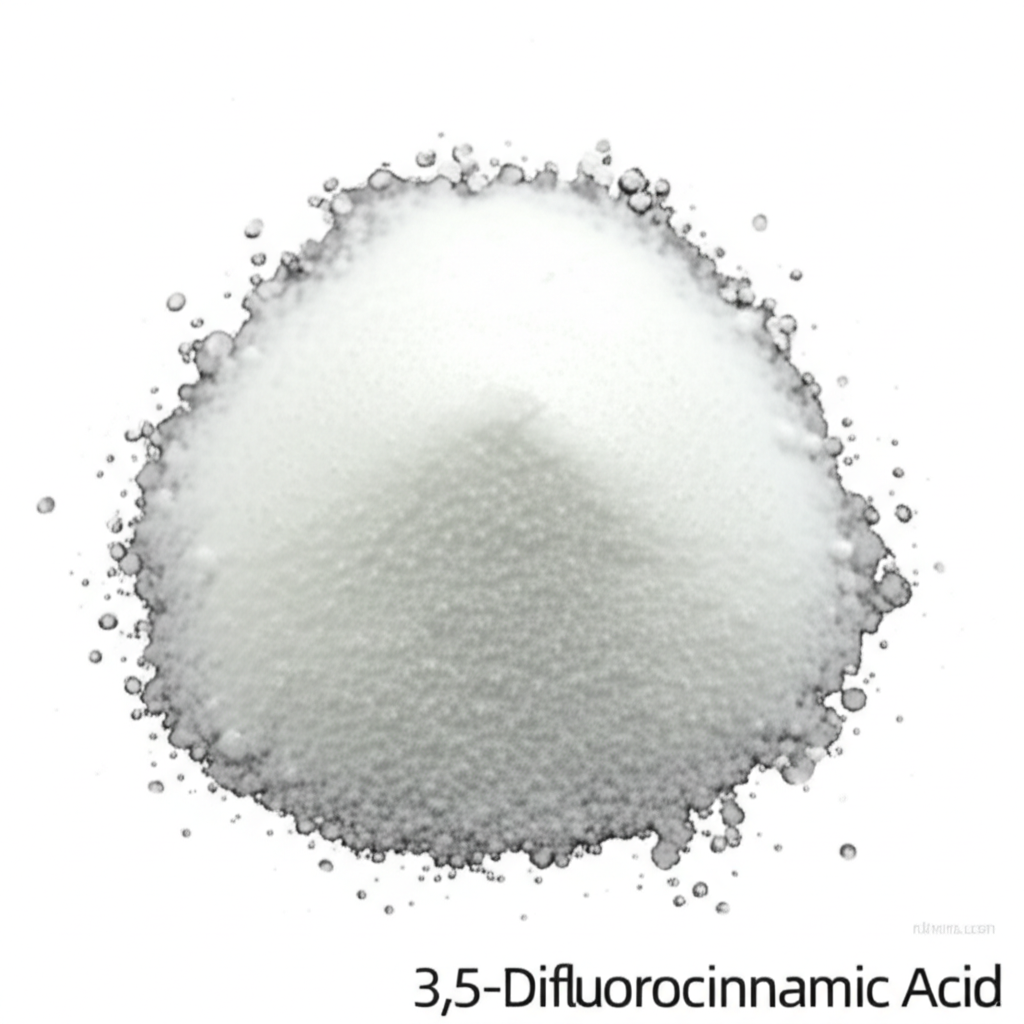3,5-Difluorocinnamic Acid: A Key Intermediate
Unlock innovation in pharmaceuticals and material science with this versatile fluorinated compound.
Get a Quote & SampleProduct Core Value

3,5-Difluorocinnamic Acid
This compound is a vital organic intermediate, recognized for its unique fluorinated structure that significantly enhances its reactivity and stability in various chemical processes. It serves as a crucial building block for the development of novel pharmaceuticals and advanced materials.
- Discover the potential of 3,5-difluorocinnamic acid in pharmaceutical development, where it acts as a key intermediate in synthesizing compounds with improved biological activity.
- Explore 3,5-difluorocinnamic acid material science applications, leveraging its properties to create advanced polymers and coatings with enhanced thermal stability and mechanical properties.
- Understand the 3,5-difluorocinnamic acid synthesis pathways and how they lead to innovative chemical products.
- Learn about fluorinated organic intermediates and their critical role in modern chemical research and industry.
Key Advantages Offered
Enhanced Reactivity and Stability
The presence of fluorine atoms in 3,5-difluorocinnamic acid significantly boosts its chemical reactivity and stability, making it an ideal candidate for demanding synthesis projects.
Broad Application Spectrum
From creating new anti-inflammatory drugs to developing high-performance materials, its utility spans across multiple industries, demonstrating its versatility.
Foundation for Innovation
As a fundamental building block, it empowers researchers and developers to explore new frontiers in medicinal chemistry and material science, driving innovation.
Key Applications
Pharmaceutical Synthesis
Utilize 3,5-difluorocinnamic acid as a critical component in the synthesis of novel therapeutic agents, particularly anti-inflammatory and analgesic drugs, contributing to advancements in medicine.
Material Science
Incorporate this compound into advanced materials and polymers to enhance properties like thermal stability and mechanical strength, leading to next-generation products.
Agrochemical Development
Investigate the potential of 3,5-difluorocinnamic acid in creating more environmentally friendly herbicides and pesticides, addressing the need for sustainable agricultural solutions.
Biochemical Research
Employ this chemical in biochemical studies to understand enzyme inhibition and receptor interactions, providing valuable insights into disease mechanisms and metabolic pathways.
